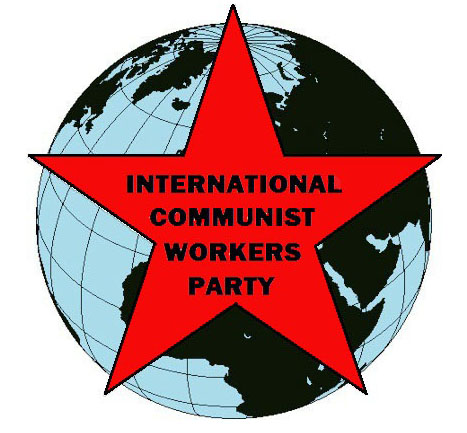
 |
FIGHT FOR COMMUNISM! |
International Communist Workers Party | |
“In the past we lived worse than animals,” said a young Tibetan woman leader in 1959. “Now we have stood up! In the past we wore rags; now we have a change of clothing from the master’s stock of goods. In the past we slept with the donkeys and now we sleep in the manor-house.”
Anna Louise Strong noted that “Tibet faced the problem of where to head. Letting individual ownership develop freely would inevitably lead to polarization [and] produce a new exploiting class.
“Responding firmly to the Party’s call,” she continued, “the serfs and slaves just liberated from hell took the socialist road at a gallop.”
They joined the Socialist Education Movement and mutual-aid teams. Many later organized communes.
During the Cultural Revolution the masses denounced “karma.” They broke the chains of religion. They turned “sacred” mountains and rivers into high-yield fields and irrigation systems. Groups of women hunted “sacred” animals. They caught “sacred” fish.
The Chinese Communist Party (CCP) often tailed the masses instead of leading them.
The People’s Liberation Army (PLA) arrived in Tibet in 1950. Thousands of serfs rose up against the nobility and the lama monks. They attacked and vandalized monasteries. Many took revenge against their former oppressors.
But the CCP outlawed these actions. Their policy was uniting with “progressive” feudal lords instead of waging class struggle.
Their “democratic reform’’ ended forced labor and personal servitude (but not exploitation). It reduced (not ended) land rent and interest. Later, they “bought out” land from the masters and distributed it to individual tillers.
The masses had already paid for this land with their sweat, blood and tears. Real communists would have organized them to seize it and work it collectively.
The CCP also tailed peasants in fighting religious superstition.
Some peasants confronting a sudden flood used stones from a pile built for religious purposes. “What are you doing, acting against religion?” asked CCP officials.
Official policy was to avoid discussing the Dalai Lama. But one peasant was overheard telling others: “The Dalai Lama is the biggest serf-owner in Tibet! We may have to ‘struggle’ with him.”
Former serfs learned to read. Many studied Marxism and “Mao Zedong Thought.” But often this only meant reciting slogans. For many, Mao replaced the Dalai Lama as the new guru.
We communists today fight for mass study of communist philosophy (dialectical materialism). Millions of workers, not just a few professors, must help develop our communist political line.
Socialism maintained key capitalist social relations
Tibetan communists organized “inhabitants’ committees” to clean up neighborhoods and organize housing for all. But the CCP sharply distinguished these from “state power.” Real power – the PLA and control over the means of production – was not in workers’ hands.
Communism will massively organize workers at the point of production and in neighborhoods into Party collectives. These will lead still broader masses to make and carry out all decisions. They will form one world-wide organization that unites the masses “from each according to ability and commitment, to each according to need.”
Today fewer than 10% of all Chinese adults are CCP members. After three generations of real communism we’d expect almost all youths and adults to be active Party members. We ask Red Flag readers to join the Party now (if you haven’t already). Help build communist collectives!
Tibetan inhabitants’ committees planted community gardens. Socialism decreed that those who worked should get vegetables in proportion to the work they did. However, many people who helped plant gardens let their vegetables go to those who needed them.
We communists mobilize the masses for distribution according to need, not according to work. We reject all individual material incentives.
The CCP openly embraced capitalism in its Central Document #1 (1983). The Tibetan masses, no longer serfs or slaves, are now wage-slaves. As Strong predicted, “letting individual ownership develop freely” has led to polarization. It produced a new exploiting class, led by “communist” party officials.
A regional CCP leader openly declared “the rule of market economics” to be “indispensable for the development of Tibet.” He admitted that this causes “an imbalanced distribution.”
Today about one-third of Tibetans live in poverty. Wages have increased for state-sector employment but Tibetans don’t often get these jobs. The gap between the richest and poorest is growing. Eighty-three Tibetan gold miners were buried alive in 2013 in a massive mudslide caused by capitalists’ unsafe cost-cutting practices.
And workers in Tibet are again fighting back. In 2012, hundreds of Sichuanese migrant telecommunications laborers in Tibet protested, demanding millions of yuan in unpaid wages. In 2014, 160 long-term “substitute” teachers demanded equal salaries and benefits as other teachers.
These workers and billions like them around the world must be mobilized, not for reform or democracy or socialism, but for COMMUNISM.